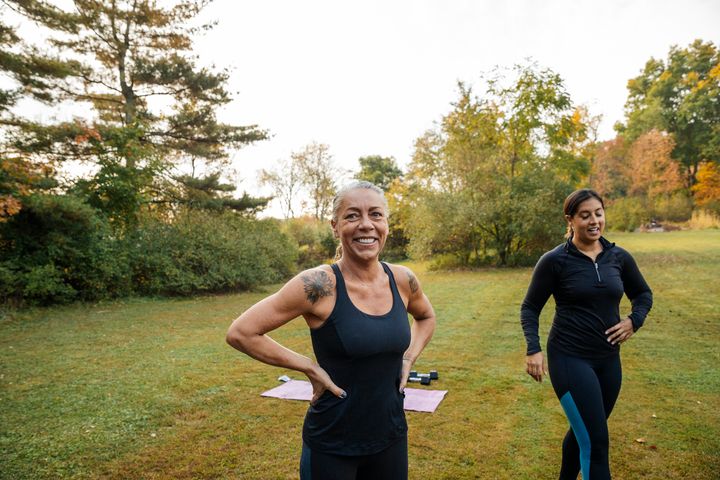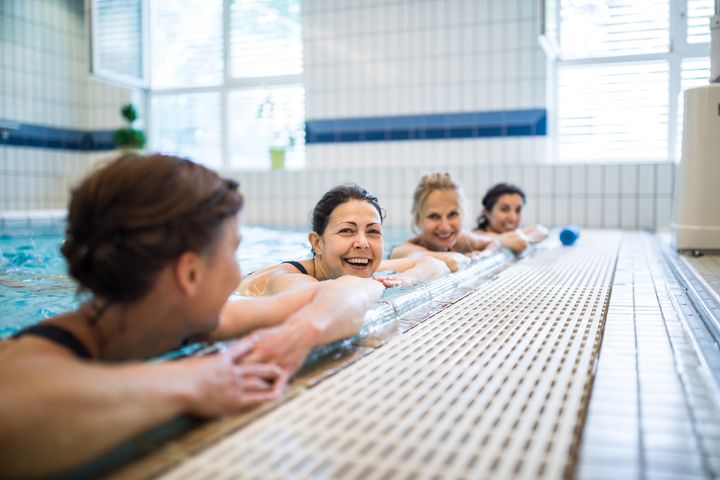
You’re reading Move, the nudge we need to get active, however makes us happiest and healthiest.
When your exercise routine has completely dropped off, getting back into it can feel intimidating. But you should know, you’re really, really not alone with this.
One in three women are currently taking a “break from exercise”, according to new research by the fitness tracking app Strava and the This Girl Can campaign.
In a poll of more than 2,000 women, 35% of respondents said they were on an exercise break, with lulls in activity lasting anywhere from one month to several years. The average pause was 13 months.
But the majority of women (69%) currently on a break said they wanted to restart exercise. Nine in 10 said they faced challenges and obstacles, the most common were a lack of confidence or poor body image (68%), lack of focus (39%), being judged by others (19%) and lack of support (9%).
We’re not going to pretend that getting back into exercise is easy, but once you overcome those hurdles, it is worth it. Here are seven small tips and pieces of advice to get you started.
1. Focus on taking part – not performance
“It doesn’t matter how good or bad you are at something – it’s the doing that counts,” says Kate Dale, This Girl Can’s campaign lead. “If you’re taking part in getting active, then that’s something to celebrate.”
2. Start small
“Start small. Try running, walking or cycling or dancing for five or 10 minutes and build up from there. It’s the movement that counts – not how far or fast you go,” says Dale.
“There’s no ‘right’ way to start exercising again after a break. Take your time and do what is right for you.”
3. Nail your schedule
Open your calendar on your phone right now and block in a time for exercise.
“When creating a workout routine, think about what suits you and your diary. Are you free on a Tuesday evening? Update your calendar and cut out some time for your all-important dose of exercise,” says May Beaufort, health and wellbeing coach at Westfield Health.
“You may want to schedule your workout sessions during quiet hours, so that they are not pushed aside by other pressing tasks or everyday duties. For instance, lunch-hour exercising can be easily ‘disrupted’ by work commitments, forcing you to skip your workout slot for the day. Instead, early morning sessions or after-work programmes are less likely to be disrupted.”

4. Music matters
Next time you’re watching TV, make a playlist with your favourite songs and use that to help you get moving. Trust us, this one is so simple but effective.
5. Book your second session
Committing to your first workout is great. Committing to your second is better. “The key to getting back in shape is to simply keep going,” says Beaufort. “Try not to fall into the trap of taking long breaks between one exercise session and the next, as you will ultimately end up breaking the habit.”
6. Do it for yourself
Sharing your progress on social media is all well and good, but remember, you’re not in this for the likes.
“Exercise for your own pleasure and motivation. In short, you shouldn’t take up workout sessions just to please and impress others,” says Beaufort. “Physical activity requires effort and dedication, and unless it is making you feel good and giving you energy, you may struggle to stick to your programme.”
7. Use your community to stay motivated
When you feel your motivation waning, you might need some friendly cheerleading. “The This Girl Can Club on Strava will provide a supportive and judgment-free space to build women’s confidence to take that first step towards getting active again,” says Dale.
Find more information at thisgirlcan.co.uk/MakeYourComeback/
Move celebrates exercise in all its forms, with accessible features encouraging you to add movement into your day – because it’s not just good for the body, but the mind, too. We get it: workouts can be a bit of a slog, but there are ways you can move more without dreading it. Whether you love hikes, bike rides, YouTube workouts or hula hoop routines, exercise should be something to enjoy.
